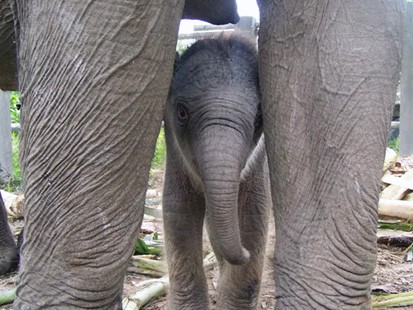
Texas can lay claim to top beef cattle -- from Japan
Web Posted: 12/26/2007 11:55 AM CST
John MacCormack
Express-News
HARWOOD — Years after some wily Americans had slipped a small herd of coveted Akaushi cattle out of Japan through a tiny export loophole, Jose Antonio Elias Calles ran into one of their former owners in that country.
"He said at one point he had thought about coming to the United States and 'killing these people who had stolen our children,'" recalled Calles, who now manages the only herd of Akaushi outside Japan.
"They call these animals their children because they have such an important place in their society. They have a powerful mystique for the Japanese," said Calles, 44, the great-grandson of Plutarco Elias Calles, the former Mexican president.
Born in Mexico and educated in the United States, Calles has studied Japanese cattle and beef for almost two decades. And like the Japanese, he and others treasure the Akaushi, if for more down-to-earth reasons.
It's not just snobbery that makes people willing to pay up to $200 for an Akaushi steak at certain East Coast restaurants, or that induces others to pay $45 retail for the same 14-ounce rib-eye.
To true believers, an Akaushi is the tastiest and healthiest steak one can buy.
"These cattle are about two grades above U.S. prime. The U.S. Department of Agriculture doesn't even have a chart that goes as high as these cattle produce," said Jay Gray, who manages the feedlot in Gonzales where the Akaushi are fattened up.
"This beef is totally different. It makes what we're used to eating seem rather mundane. It's the best steak I've ever eaten, and I've eaten some," he said with measured understatement.
And according to scientists at Texas A&M, that's neither hype nor imagination.
Simply put, besides commanding top dollar, a juicy, heavily marbled Akaushi steak ranks far higher than the best American beef in healthy fats and lower in unhealthy saturated fats.
"There's a genetic predisposition in those cattle to put on a softer fat that's high in oleic acid and monounsaturated fats," said Stephen Smith, a biochemist and meat specialist at A&M, one of two centers of study of Japanese cattle in the United States.
"It really is counterintuitive. People think more fat means higher in saturated fat. But the more monounsaturated fat in the beef, the more benefits you get, and the beef with the highest levels is Japanese," he said.
So far, the extent of health benefits from eating lots of Akaushi beef are unclear, but early results show that unlike other beef, large doses are not unhealthy, Smith said.
"We had really fat hamburgers made with Japanese beef and we fed them to people five times a week for five weeks, and everything went in the right direction," he said of health indicators.
"And for the people eating grass-fed Angus, everything went in the wrong direction," he added of the control study group.
No saki tonics
Calles long ago mended fences with Japanese ranchers, who now respect his expertise. In 1998 he was the first foreigner named chief judge in the national Akaushi competition in Kumamoto.
Calles said he has made all his Akaushi research available to the Japanese and they have visited his Texas operation.
"The commitment I made years ago to the Japanese government is that if anything happens to the Akaushi population in Japan, this is their insurance policy," he said of the Texas herd.
The group of 11 Akaushis that arrived in 1994 since has grown to more than 5,000 head, largely through a temporary embryo transplant program that used American cows as surrogates.
The Texas Akaushi, all of which look like first cousins, are the only sizable herd outside Japan. They're the crown jewels of the HeartBrand Beef Co., of which Calles is president and a minority shareholder.
While amusing stories abound about cattle in Japan being soothed by classical music, massages and saki tonics, the caramel-colored Akaushi grazing behind high fences on ranches east of San Antonio are hardly pampered. They do get clean running water and don't feel uptight about roundups or rowdy cowboys.
"The concept is minimum stress management. You don't use ropes, horses, motorcycles or four-wheelers," said Calles, who demonstrated the technique by summoning a small group of cattle.
The fences keep out unwelcome strangers, like sick cattle or the neighbor's amorous bull. Only once has a strange bull mingled with the Akaushi cows, and he was quickly evicted.
"We had to abort one cow, and that was the end of the problem," Calles said.
The Akaushi here are raised without hormones or antibiotics, and are fattened longer than typical American cattle. After at least 310 days on feed, they bulk out to about 1,700 pounds, a third larger than a typical American steer.
The Japanese have provided genealogy records to Calles for every head going back 30 generations, and from birth, each animal is scrutinized and evaluated.
Wiener therapy
The report card for young male Akaushis is harsh, covering 32 esoteric criteria, from the shape and size of its reproductive organs to its temperament and color.
The grading system is even tougher: Only the top 2 percent are kept as breeders, with the rest ending up in the feedlot.
And while the Akaushi are considered a national treasure in Japan, it was Calles and other researchers who together unlocked the special qualities of their meat.
"It took the Japanese 100 years to develop these cattle, and everything was based on palatability traits. We have records dating back to the 1880s on the breed," he said.
"But the Japanese didn't know about the unique fatty acid composition of the Akaushi. Of all the breeds of cattle in the world, only two kinds, both Japanese, have these healthy qualities," he said.
Even without health benefit research, some folks already are believers.
Wanda Broussard, the head of human resources at Eddy Packing in Yoakum, which ships Akaushi beef and also makes some of it into sausages and hotdogs, believes it saved her from a health crisis.
"I was on Lipitor for very high cholesterol. I had been on blood pressure medicine for nine years. I was diagnosed with Type II diabetes. I also had liver disease," said Broussard, 61.
Her boss, owner Ronald Beeman, who also has a majority interest in HeartBrand, made her an interesting offer.
"I said if you'll be the guinea pig, we'll give you the meat," Beeman recalled.
Long story short, after Broussard began eating lots of Akaushi beef, most of her health problems vanished, including high cholesterol and high blood pressure, she said.
"To this day, I'm not on medication. If my cholesterol jumps up, I eat more wieners and hamburgers, and it will come down," she said.
Not everyone is convinced.
Charles Gaskins, a professor of animal science at Washington State University who worked with Calles during his studies on Japanese cattle there, said most health claims remain unproven.
"I'm sold on it as steak. There's no question in my mind, it's superior to the best Angus. It not only has more flavor, it's more tender," he said.
"But I'm not sold on it being a lot healthier. With Japanese cattle you get a lot more fat. So what if some of it is healthier? A lot of work needs to be done," he said.
With HeartBrand now sending only about 40 steers a month to market, the company is a pipsqueak in the massive American beef market where nearly 800,000 head are slaughtered weekly.
So far, it has zealously protected its one unique asset.
"There are plenty of people interested in buying the genetics but if we did that, we'd be out of business in three years," Calles said.
The general plan is to begin marketing meat from both purebred Akaushi and first-generation crossbreeds which inherit many of the Akaushi qualities.
"The goal is to be slaughtering 2,000 head of cross cattle a week in 10 years," Beeman said.
A recent cover photo of an Akaushi steak in Texas Monthly magazine didn't hurt the breed's prospects, he said.
"We've got the new kid on the block, telling a story that's hard to believe. But a year ago, only one in a million people heard of Akaushi beef," Beeman said.
"It's kind of like having your cake and eating it, too. It tastes good and it's also good for you," he said.
A Great Escape
Oh, and what about that peculiar trade loophole that made it all possible 15 years ago?
Calles said the Japanese were responding to pressure for a new trade agreement with the United States in 1992 when they inadvertently allowed the small heard of Akaushi to legally exit.
"The protocol allowed Americans to import the cattle only if they were able to purchase them, relocate them to a quarantine station and file for export all within 24 hours," he recalled.
"The protocol was so tight, it was insane that anyone would try it. It was a miracle these cattle left Japan," he recalled.
The Japanese hadn't anticipated Americans who had done their homework helped by a South Korean company doing business in Japan and by the U.S. State Department.
Still, the cattle sat in Japanese quarantine for two years, costing their American owners more than $2 million for care and security. Two attempts were made to poison them, Calles said.
Finally, in November 1994, the Japanese relented, and the three bulls and eight heifers were flown to New York City in a specially equipped Boeing 747.
There they stayed for another six months in quarantine. When they finally made it to Texas, the cattle proved healthy and reproductive. And the rest, as they say, is rib-eye history.
jmaccormack@express-news.net



































